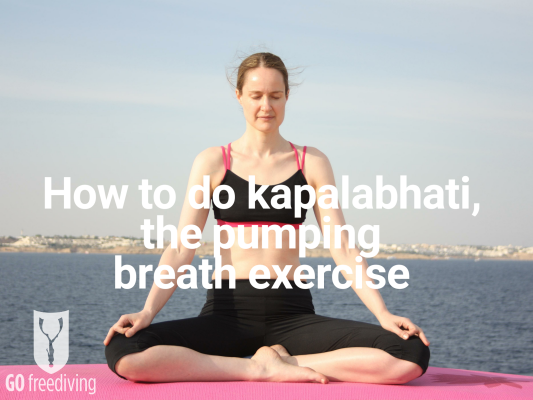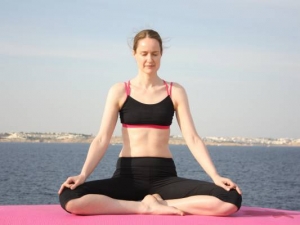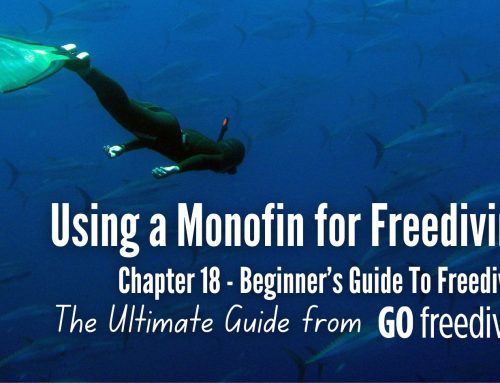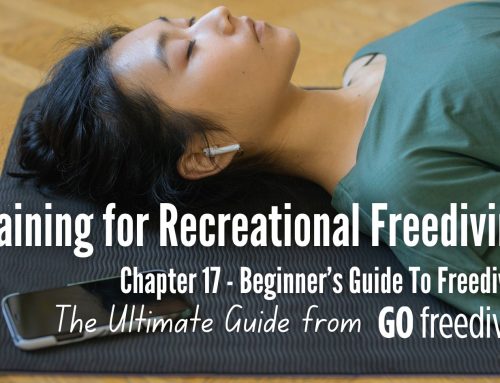Kapalabhati is a yogic breathing exercise which tones the diaphragm, exercises the stomach muscles, helps clear mucous and infection, and improves breathing and lung function. It is usually thought of as ‘pranayama‘ one of a series of exercises in yoga concerned with control and manipulation of the breath. However kapalabhati is actually a yoga ‘kriya‘ a yogic cleansing exercise designed to clean the lungs out.
It is often called the ‘pumping breath‘ as it is characterised by a rhythmic series of exhales, as if ‘pumping’ air out of the body. It is also known as the ‘shining skull‘ breath, often because it can induce a feeling of being light-headed. If you do feel light-headed during the exercise however, it is a clear sign that you have hyperventilated and are doing the exercise incorrectly. The videos below will show you the correct way to practice it.
Kapalabhati is usually performed in conjunction with breath retention, with a series of ‘pumpings’ being followed by a breath hold. This is called a ’round’, and usually someone will perform three rounds of kapalabhati, for example: 40 pumpings and a 40 second breath hold, 50 pumpings and a 50 second breath hold and finally 60 pumpings and a 60 second breath hold.
A further step is to use yogic ‘bandhas‘ or ‘locks‘ during the breath retention part of kapalabhati. During the breath retention, the pelvic floor muscles are engaged, then the diaphragm is pulled up, and finally the epiglottis is closed and the chin lowered. During the exhale after the breath hold, the bottom two locks are still engaged but the throat lock is released.
Why is kapalabhati so good for for freedivers?
Kapalabhati has multiple benefits for everyone but is particularly relevant for freedivers.
- Kapalabhati teaches breath control and improves lung function. It is one of the key exercises Emma Farrell has used with Olympic and Paralympic athletes to improve their breathing and performance.
- Because kapalabhati uses breath retention it is a useful technique for improving breath hold and CO2 tolerance
- Kapalabhati strengthens and tones the diaphragm which helps the body control and deal with diaphragm contractions during apnea performance
- The locks or ‘bandhas’ used during kapalabhati help increase diaphragm flexibility, reduce the risk of lung baratrauma, and strengthen the epiglottis which helps maintain the mouth fill for deep equalisation.
How to do kapalabhati
Sitting on a chair or on the floor with your spine straight, close the eyes and inhale deeply into the belly and then exhale gently. Do this two times and then inhale deeply and begin the pumpings.
- Contract the abdominal muscles quickly, causing the diaphragm to move up into the thoracic cavity and pushing the air out of the lungs forcefully. The rest of the body (particularly the throat) should be completely relaxed.
- Relax the abdominal muscles, allowing the diaphragm to descend into the abdominal cavity. The effect of this will be to draw air back into the bottom of your lungs without any effort. Do not actively inhale.
- Repeat for the count specified. Out and in counts as 1
- At the end of the count, exhale fully, pushing out every last bit of air.
- Inhale deeply, exhale gently, inhale deeply, exhale completely
- Then (if doing a retention), inhale to ¾ of your full capacity and hold.
- After the retention, do 3 relaxed breaths and then start the next round of pumpings.
When you first begin your practice, start with 3 x 20 pumpings and 20 second retentions. Keep the pumpings slow to ensure you are doing them correctly. Slow is better than fast! Then build up to a practice of 40 pumpings followed by a 40 second retention, 50 pumpings followed by a 50 second retention and then 60 pumpings followed by a 60 second retention. When this is completely comfortable you can slowly build up the pumpings and retentions. Just always make sure that you are doing the exercise correctly.
You should only be inhaling and exhaling tidal volume, a very small amount of air. If you feel any of the following symptoms:
- Light headed
- Dizzy
- Euphoric
- Tingling sensation in any part of the body
- Metallic taste in the mouth
- Hands cramping up with the fingers curled in
Then stop the exercise immediately as you have hyperventilated!
When not to do kapalabhati
- Do not do kapalabhati if you are pregnant
- Do not practice kapalabhati on a full stomach
- Do not stand up when practicing kapalabhati, make sure you are seated on the floor or on a chair
- Avoid kapalabhati if you have recently had abdominal surgery, recently given birth, or have any other abdominal issue that kapalabhati may make worse
Now you’ve had a go at a learning kapalabhati from these videos, come and learn from us in person on one of our holidays or courses!
Learn to freedive with Go Freediving!
Go Freediving is the longest established, most experienced and friendliest freediving course provider in the UK, led by world class freediving instructor trainer Emma Farrell, and her team of personally trained instructors. No other course provider has such a good instructor to student ratio, safety record and personal touch.
Whether you’re a beginner dipping your toes into the world of freediving, a seasoned pro looking to turn professional, or simply a freediver of any level who wants the best freediving holiday in the world, we’re here for you!
Also check out our online guide, The Beginners Guide to Freediving by clicking here!
Keep in touch with everything Freediving
Subscribe to our mailing list for weekly newsletters with exclusive articles, news, films, offers and more!









Leave A Comment